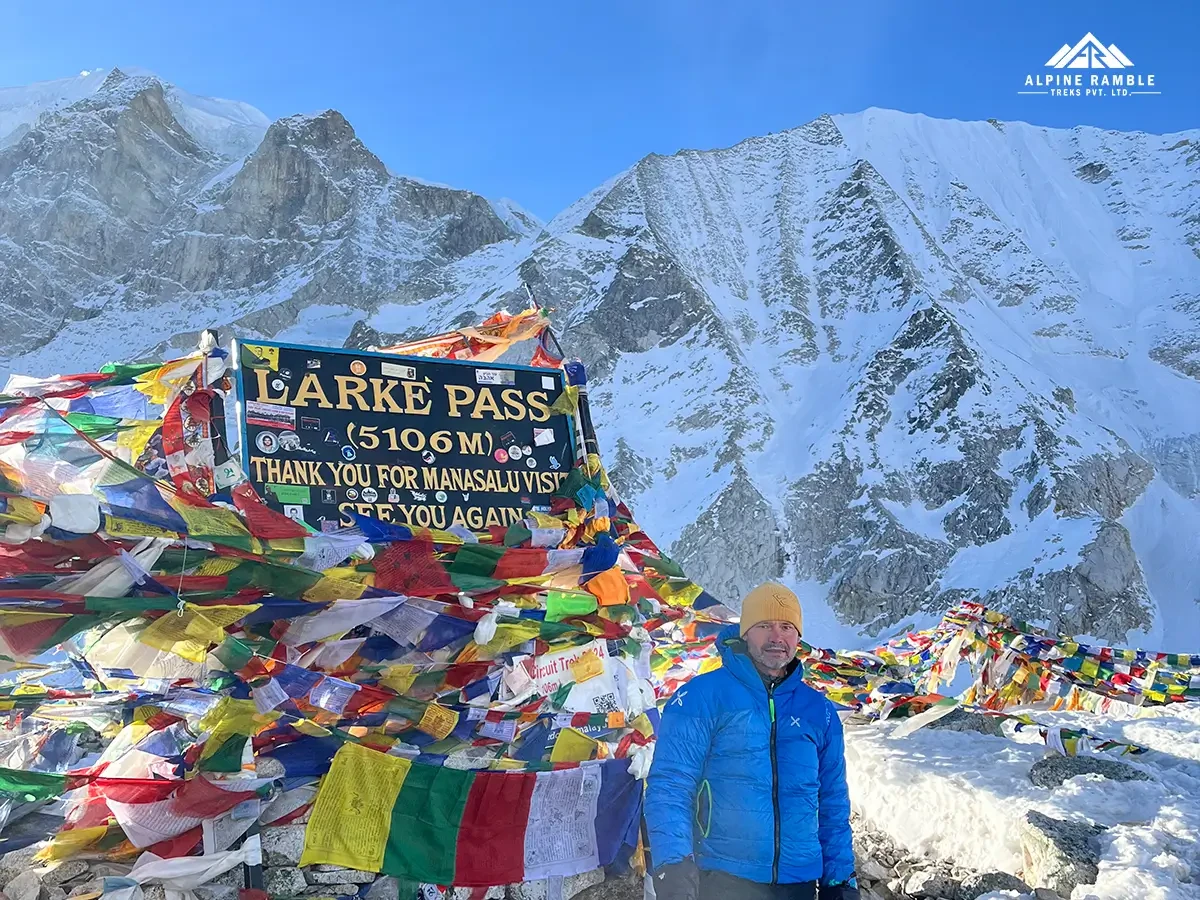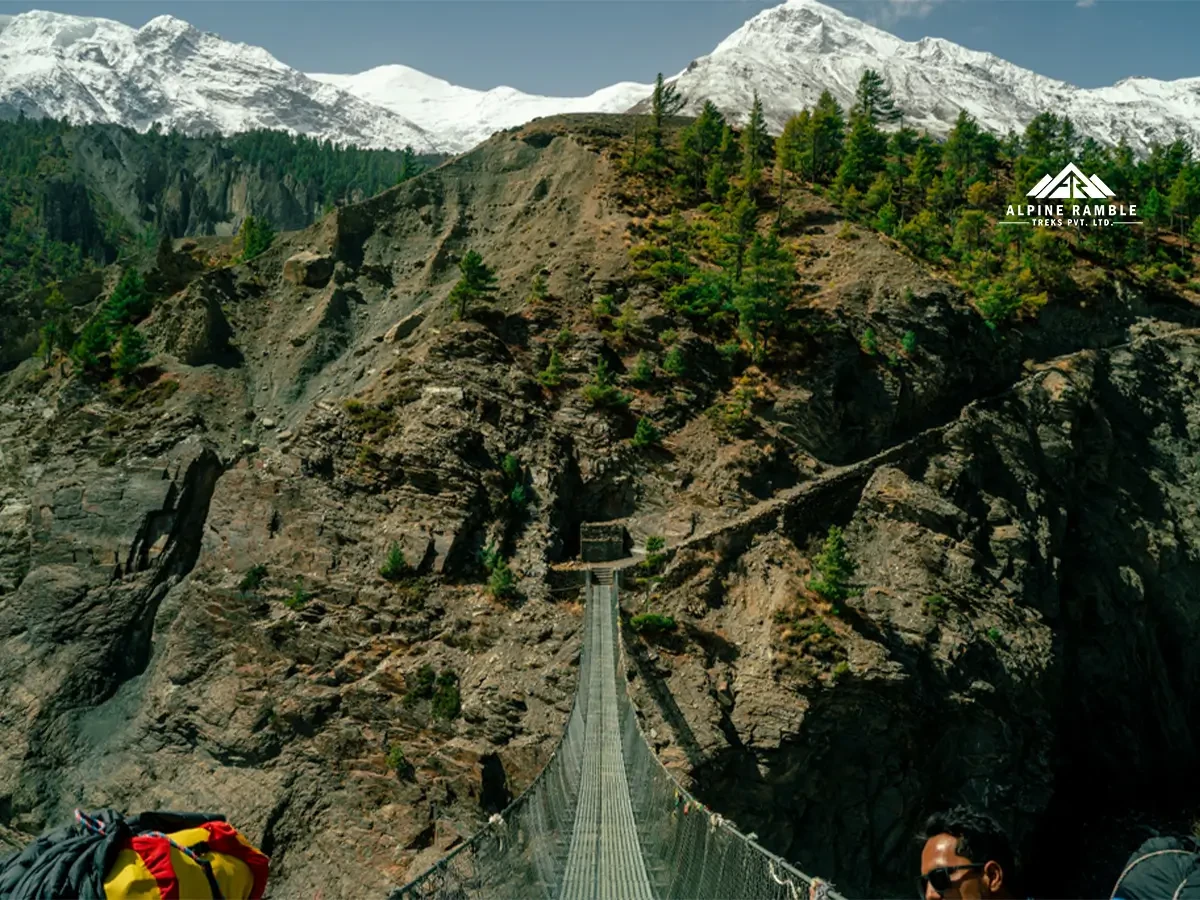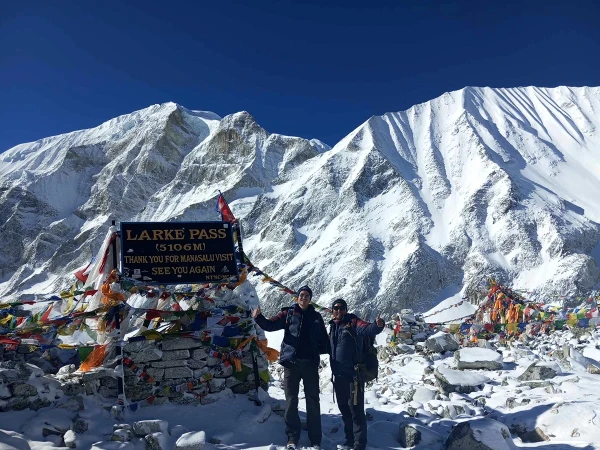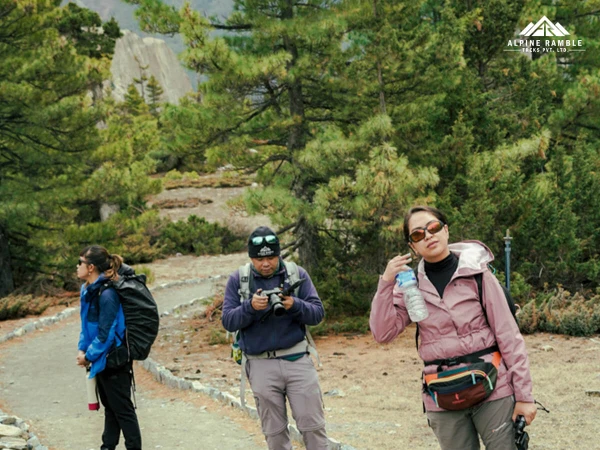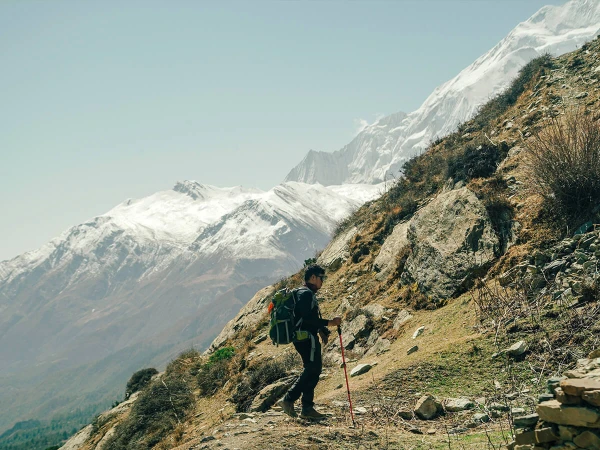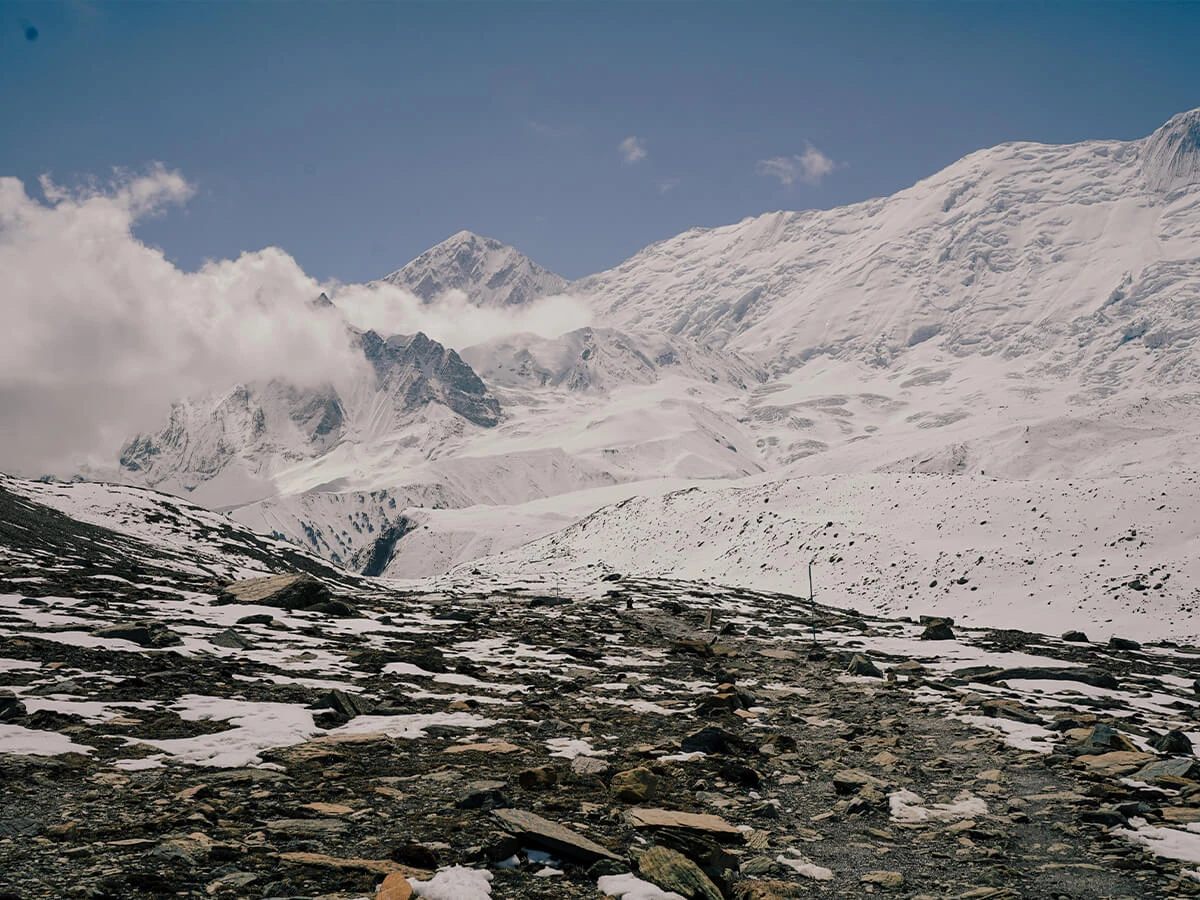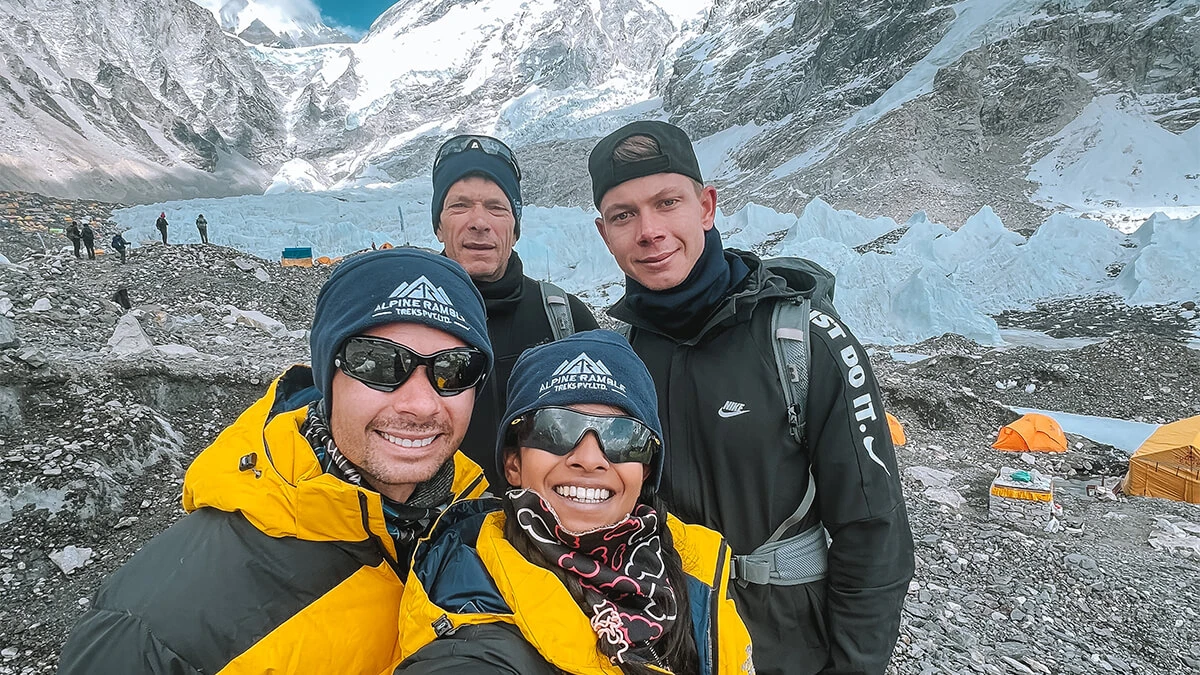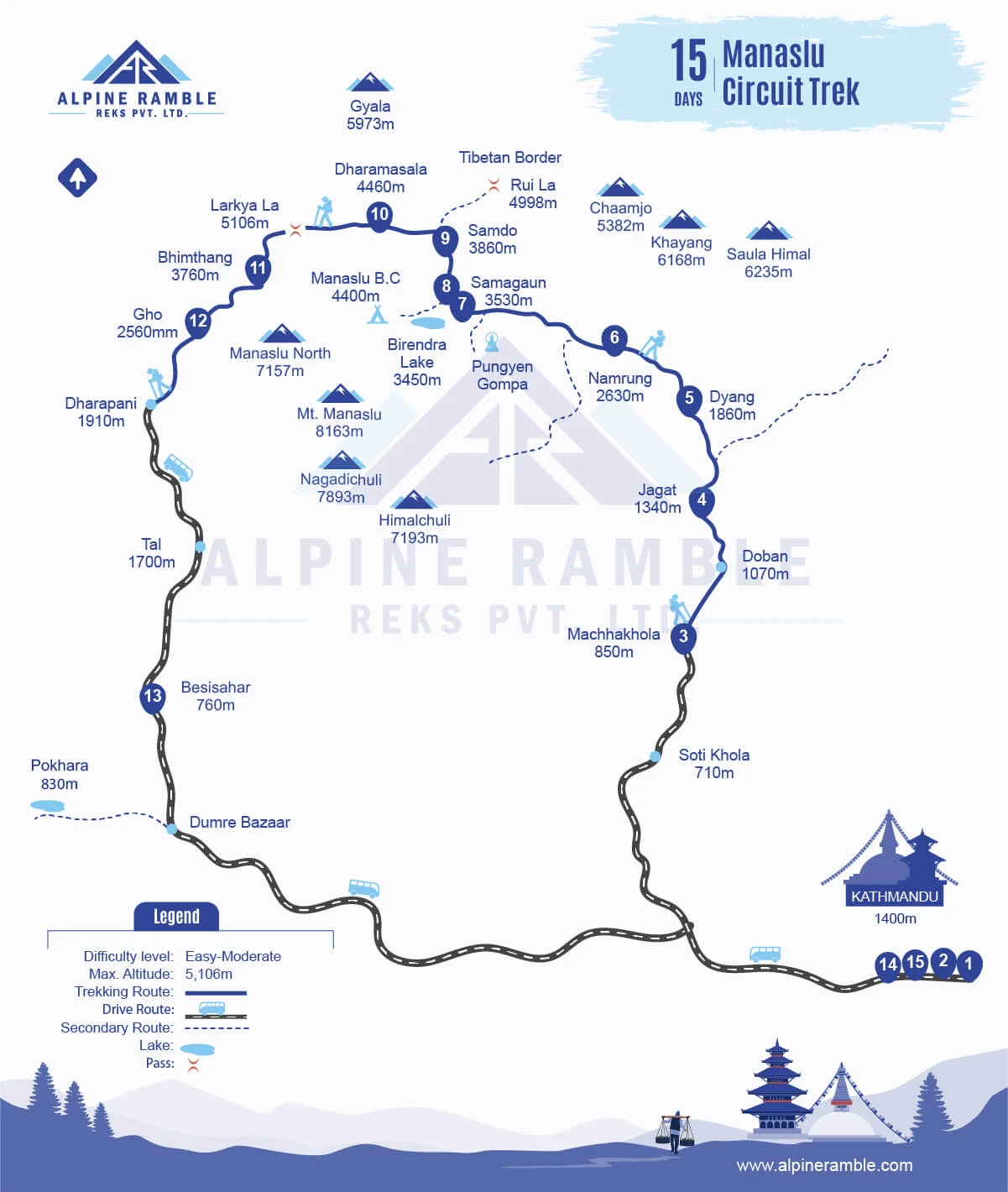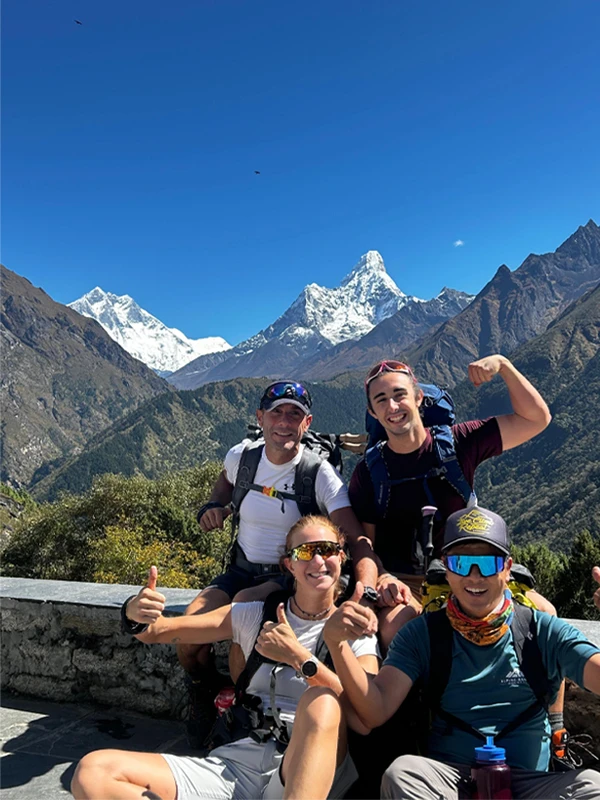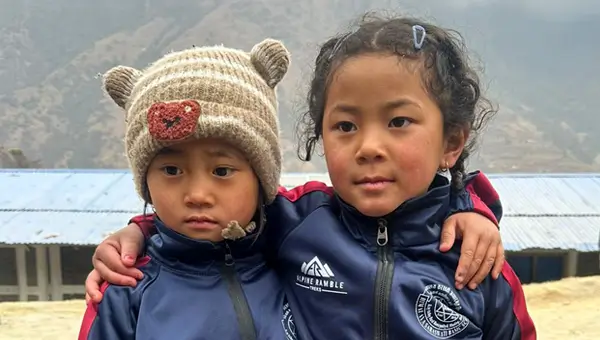Can the Manaslu Circuit Trek be done in the span of 12 days? Yes! With our carefully crafted itinerary, we can give an itinerary that can be successfully completed in just 12 days. The Manaslu Circuit Trek, known for harboring the world’s eighth tallest mountain, Mount Manaslu (8,156m), is also one of the most beautiful trekking destinations in Nepal.
Can the Manaslu Circuit Trek be done in the span of 12 days? Yes! With our carefully crafted itinerary, we can give an itinerary that can be successfully completed in just 12 days. The Manaslu Circuit Trek, known for harboring the world’s eighth tallest mountain, Mount Manaslu (8,156m), is also one of the most beautiful trekking destinations in Nepal.
The short Manaslu Circuit Trek of 12 days is the perfect trek to do for those who are in a time pinch but still want to hike through trails that are a bit off the beaten path and less traveled. If you are looking to enjoy a less crowded trail that takes you into the deep forested routes up to the high mountains, then this trek is for you.
The magical journey of this short Manaslu Circuit Trek gives you the golden opportunity to experience nature and mountains in their very raw form, of course, and the people and culture that truly make the journey a once-in-a-lifetime adventure.
Short Manaslu Circuit Trek: Comprehensive 12- Day Itinerary Overview
Originally the Manaslu Circuit Trek could take about anywhere from 15 to 18 days, depending on the route and itinerary. But we are aware that many people might not have that much time to spare for the trek, so we have come up with a perfect itinerary that makes the trek short and can be completed within just 12 days.
Our journey for the trek begins with a drive to a place called Machha Khola via a local bus. The drive is scenic and thrilling. The second day is when you really start to make use of your sturdy legs. Day by day, you ascend to a higher place and the scenery starts to change from the lush green alpine forests to arid land where the tree line begins to disappear. From Machha Khola to Jagat to Dyang to Namrung, you can notice the differences in your surroundings as you trek from one village to another each day. On the sixth day, you will stay at Samagaon as a part of the acclimatization process to make sure your body gets used to the high elevation and reduces the chances of getting altitude sickness.
As the trek gets more rigorous with gain in elevation, the true testament of the entire trek comes in the form of crossing the famous Larkya La Pass at an elevation of 5,106m (16,751ft). It is the ninth day of the trek and after crossing the pass, which you can add as a significant achievement under your belt, the descent finally begins. And after two more days of descent, you’ll find yourself in BesiSahar and on your way back to Kathmandu on the twelfth day.
The entire journey is filled with absolutely breathtaking mountainous landscapes with snow-covered peaks along with reverberating rivers that flow directly from the Himalayas. And as the trail itself is known to be offbeat, the communities and cultures you experience will be in their most authentic form, something the popular destinations like Annapurna Base Camp or Everest Base Camp lack.
The short Manaslu Circuit Trek is the best option for you if you are looking for a trail less crowded with electrifying views of the mountains, intricate architectural villages, unique culture and traditions, local cuisines, and, of course, the warm hospitality of the local communities.
What makes the Short Manaslu Circuit Trek so special?
Nepal has a lot to offer when it comes to natural beauty and culture that is incredibly diverse. The Manaslu Circuit Trek falls under the category of underrated yet extremely beautiful destinations because it is not as popular as the Annapurna or the Everest and maybe that is one of the main charms of this trek. But there are many things that make the 12 days of the Manaslu Circuit Trek very special and they are discussed below:
Off-Beat Trail
The Manaslu Circuit trail is a less chosen path compared to its counterparts in the Annapurna and Everest regions. And while being a less traveled trekking route means the facilities aren’t up to luxury standards, that is how you get the most authentic experience. It is also the best option for people who do not necessarily want to walk a crowded trail, especially during peak seasons of spring and autumn.
The trekking route of the Manaslu Circuit is more peaceful, rugged, and undisturbed, with a flair of unique culture and landscapes. This is the perfect choice for someone who wants to get away from crazy and buzzing city life to a more secluded place with breathtaking views.
Protected and Restricted Area
Doing the Manaslu Circuit Trek means entering the Manaslu Conservation Area, which is not only a protected area but also a restricted area. This means you require a special permit to enter the area and do the trek.
Not only is the area diverse in terms of ecology and landscapes but it also has a very prominent culture deeply rooted in Tibetan Buddhism. And being part of the conservation area helps to protect, conserve, and preserve the natural and cultural aspects of the Manaslu region. This means you get to witness the most raw form of the region’s biological diversity, the high Himalayas, and the local culture.
Culture, Traditions, and Local Community Interaction
Like most of the mountain regions of Nepal, the Manaslu Circuit is also heavily influenced by Tibetan Buddhism. You can see it reflected in their culture, traditions, and practices of everyday life. But what adds to the uniqueness is that the culture and traditions of the Manaslu Circuit are also influenced by Hinduism.
The trails are filled with small and big monasteries, prayer flags draped around, and indigenous communities like Nubri and Tsum, who are originally from Tibet, give the true glimpse of the Manaslu Circuit. There are sparsely scattered Hindu communities as well. The monasteries and houses show a distinctive architectural feature depicting prominent Tibetan features.
The warmth and pleasant hospitality of the local people shines through as one of the highlighting experiences of the Manaslu Circuit Trek.
Mountains and Landscapes
Mountains are, of course, the main reason to do the Manaslu Circuit Trek. Aside from Mount Manaslu (8,163m), the eighth highest peak in the world, you can also see other equally beautiful mountains like Himalchuli, Ngadi Chuli, Annapurna II, Annapurna III, Annapurna IV, Kang Guru, Himlung Himal, Cheo Himal, Nemjung, Gyaji Kang, Shringi Himal, Langpo, Saula, and many more.
The snow-covered peaks are an absolute delight to look at and show you the true testament of how powerful Mother Nature truly is. The landscapes go from being covered with lush green forest to areas devoid of the color green but only surrounded by mountains on all sides.
Larkya La Pass
Undoubtedly one of the most thrilling experiences but also a quite significant achievement of the Manaslu Circuit Trek is the Larkya La Pass, which sits at an elevation of 5160 meters. It is the seventh-highest pass in Nepal. This not only challenges you to come out of your comfort zone but also gives the most satisfying reward once you reach the top. The view from the top of Larkya La is unlike anything you have ever seen. The panoramic view of the Manaslu range from the top of the pass is truly a tear-jerking experience.
Guides and Porters Cost: Short Manaslu Circuit Trek (2025/2026)
Guides and porters are a very crucial part of the Manaslu Circuit Trek. As the trekking trail falls under the restricted area of the Manaslu Conservation Area, taking a registered trekking guide is very mandatory. Porters are optional but definitely recommended. The cost for guides is $35 to $40 per day, while porter fees are generally between $25 and $30 per day.
Manaslu Circuit Trek Permits Required
- Generally you are required to have four permits and they are
- Manaslu Restricted Area Permit (MRAP)
- Manaslu Conservation Area Permit (MCAP)
- Annapurna Conservation Area Permit (ACAP)
- Chumnubri Rural Municipality Permit
Food and Accommodations
Nepali food such as dal bhat is the most common food during the Manaslu Circuit Trek, along with other dishes like thukpa, momo, noodles, etc. While there are not many varieties, you can also find Western food like pancakes, pizza, pasta, etc.
Accommodations on the Manaslu Circuit route are very basic, where they provide standard rooms with twin beds. The rooms do not have a heating system so packing your own sleeping bag is recommended. The tea houses will have a common dining area where it is warm. They also most likely have a common shared bathroom. On average for food and accommodation, you will spend 20-40 USD per day.
What is the best time to do the short Manaslu Circuit Trek of 12 days?
The four seasons in Nepal represent four different experiences, so choosing the best time is directly proportional to how that experience will be. Here’s a breakdown on which season might be the best time for you to do the Manaslu Circuit Trek:
Spring (March to May)
The spring season is known to have pleasant weather, which offers clear views. It also has moderate temperatures, which means it will not be as cold, which is perfect for trekking. If you are someone who enjoys nature and flowers, then this time is definitely for you, as the rhododendrons will be in full bloom, especially from mid-May to mid-April. The daytime temperatures range from 10 to 22°C, while the nighttime temperatures are slightly milder (−5 to −10°C).
Autumn (September to November)
The autumn season overall is regarded as the best time to trek in Nepal, not only the Manaslu Circuit but in general. Similar to spring, the temperatures are moderate and the weather is pleasant and clear, allowing you to witness the magical mountain views. Like spring, autumn is also known to be a peak season, or even more so, which is why you can expect quite a number of people on the trail compared to any other season.
The temperature during the daytime ranges from 10-20°C and expect the nighttime temperatures to be as low as -10°C. The colors are vibrant as, after a rainy monsoon, the leaves start to turn brown to indicate the arrival of autumn.
Winter (December to February)
It certainly is cold and challenging to do this trek in the winter. The Manaslu Circuit is an offbeat trial to begin with and winter brings heaps of snow to navigate through, which is doable but requires an immense amount of preparation. It is recommended you have prior trekking experience before you take on the winter trek to the Manaslu Circuit. That being said, despite the below-zero temperatures, the views are absolutely breathtaking. The skies will be clear to give you the most unblemished looks of the snow-covered peaks. The daytime temperature during the winter season drops as low as 5-8°C and nighttime lows are -15 to -25°C. Therefore, thorough preparation is essential.
Monsoon/Summer (June to August)
Monsoon experiences quite a heavy amount of rainfall in most parts of the country. While high altitude in places like Manang might be exempt from the impact of rain, other places are not so much. Monsoon trekking is a fun activity and can be an enjoyable experience if fully prepared. But the risks also lie with the roads and trails of the circuit, as it is prone to landslides, which in turn can force you to delay or cancel your trek entirely. Thus, you need to take all these factors into account before you plan the Manaslu Circuit Trek during the summer. The temperatures, however, will definitely be in your favor, as the daytime temperatures typically range from 15 to 25°C and nighttime temperatures potentially drop to 0°C.
Is the short Manaslu Circuit Trek difficult?
The Manaslu Circuit Trek is categorized as a challenging trail. Despite being considered a difficult trek, it is achievable with the right training and preparation. Some of the major things that make this particular trek challenging are the rough terrain, high altitude, and chances of getting acute mountain sickness. The trek itself is not technical but you do need a certain level of fitness to successfully complete the trek. Thus, preparing your body by training for hours of rigorous hiking is the best way to ensure the trek's success. Exercises that focus on building up cardiovascular strength and breath control are the best way to prepare for the trek.
So while you do not need previous trekking experience to embark on this trek, it certainly will be a lot of help to have one. Most of all, starting on your training regime at least a month prior to your trek will be the best way to establish a successful Manaslu Circuit Trek.
Short Manaslu Circuit Trek 12 Days Distance
The total overall distance of the Manaslu Circuit Trek, regardless of the number of days it takes to trek, is approximately 177 kilometers (110 miles). But how much of this distance you will walk is determined by the route and itinerary you choose. So for this trek, on average, you will walk anywhere from 10 to 12 kilometers per day.
Thus, the trek difficulty also depends on the number of trekking days, number of trekking hours, elevation gain, and landscapes. The daily distance differs day by day, as some destinations take less time to reach while others take longer.
Transportation on the Short Manaslu Circuit Trek
Traveling in a vehicle on the short Manaslu Circuit trek is a total of two days. The first day of the trek and the final day of the trek back to Kathmandu Valley. For both days, you can either take a local bus or hire a private jeep. The local bus is cheap but takes longer, while with a private jeep it is much faster and you have the freedom to stop as you please to enjoy the road more thoroughly.
You can also ride a jeep on a sharing basis with other trekkers. Sharing a jeep is a bit more expensive than a local bus but significantly more affordable than hiring a private jeep.
Cost of Transportation on Different Means
The approximate costs of transportation during the short Manaslu Circuit Trek are as follows.
Local Bus: $15-$20 per person
Shared Jeep: $25-$35 per person (From Besi Sahar to Kathmandu)
Private Jeep: $250-$300 per jeep
The Majestic Manaslu Circuit Trek Highlights
- Off-the-beaten-path and less-traveled trekking routes make your journey a more intimate experience.
- Experience the changes in the environment as you ascend higher, from lush green forests to barren land surrounded by the snow-covered mountains.
- Walk amongst the communities that reflect culture influenced by Tibetan Buddhism in their everyday life.
- Get the most stunning views of some of the world’s highest mountains, including Mount Manaslu (the eighth tallest peak), Lamjung Himal, Mt.Annapurna II, Mount Ganesh, Mount Hiunchuli etc.
- Conquer the formidable Larkya La Pass at an altitude of 5,106m and get the most immaculate views from the top.
- Explore the Manaslu Conservation Area and maybe even get glimpses of rare and endangered species such as snow leopards.
- Enjoy the local cuisine and i
Additional Benefits of this trek with only ART
- Free Airport transportation on arrival and departure days (We will pick you up and drop you off)
- Trekking equipment such as the Sleeping bag, Down jacket, and walking poles (rental is included if needed)
- Duffle bag if required (Optional)
- Souvenir: Trekking route map/browser and printed ART's hiking T-shirt
- An Oximeter to measure your Oxygen and Pulse at a high altitude to find out accurate health conditions while you are trekking in the mountain.
- WOKI TOKI - for communication during the tre

